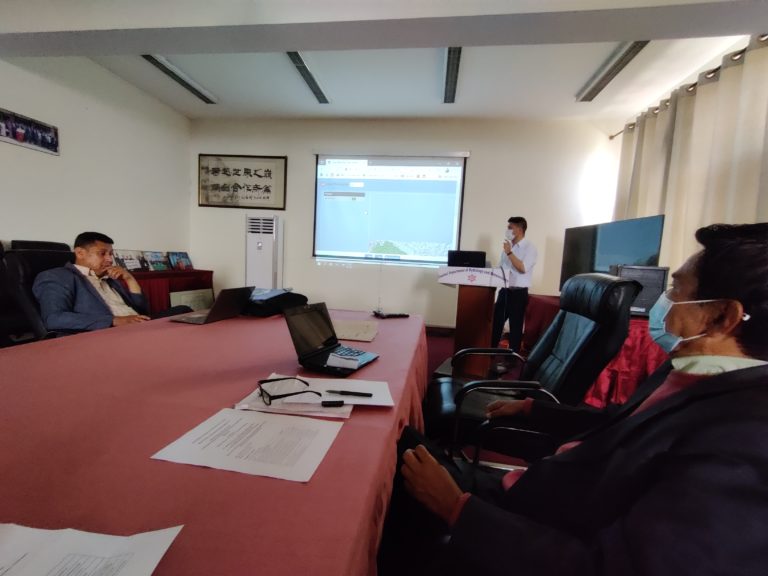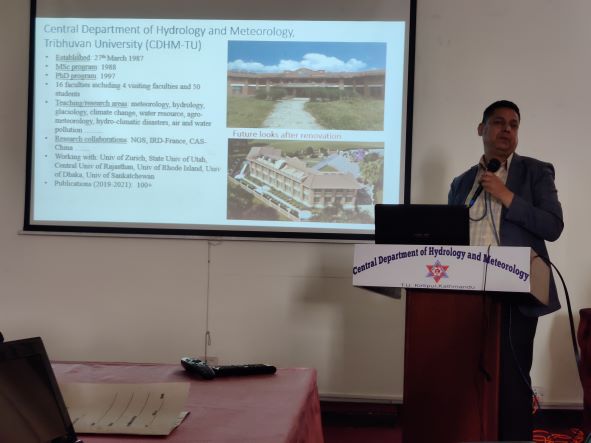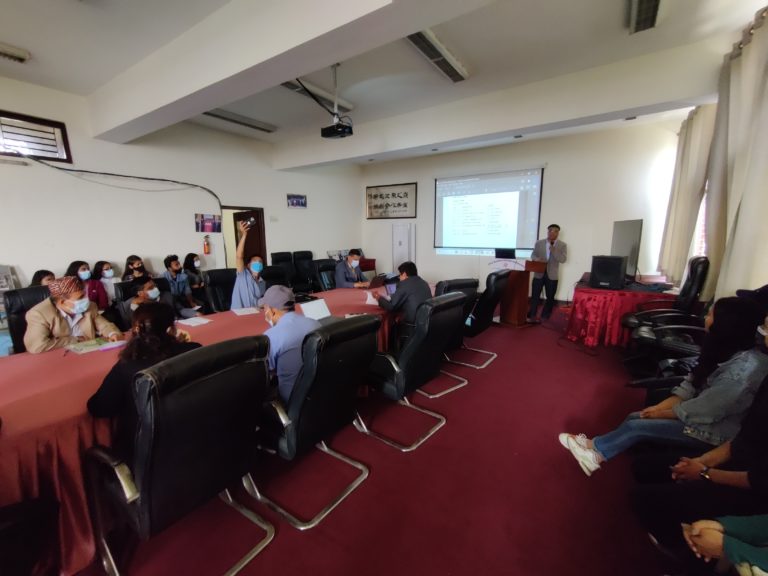On the occasion of World Meteorological Organization (WMO) Day, on 23 March 2022, The Small Earth Nepal (SEN), together with Glaciological Society of Nepal, Himalayan Cryosphere, Climate, and Disaster Research Center (HiCCDRC), Kathmandu University (KU), IAHS-Nepal Chapter, Central Department of Hydrology and Meteorology (CDHM), Tribhuvan University (TU) and UNESCO Nepal conducted two programs as a part of Nepal National Water and Weather Week (NNWWW-2022).
- Early Warning and Early Action, Hydrometeorological and Climate Information for Disaster Risk Reduction and Workshop on Weather Analysis and Forecasting – Air Pollution Monitoring
- Webinar on “Modeling three decades of the annual mass balance of Peyto Glacier, Canada, from automatic weather station data”
The first program was held at the CDHM-TU meeting hall at Kirtipur. The program was chaired by Mr. Mani Ratna Shakya, Senior Meteorologist. The participants included researchers, faculties, and students from CDHM and Trichandra Multiple Campus. The opening session was done by Dr. Dhiraj Pradhananga followed by the following presentations:
- Early warning early action, by Mr. Samir Shrestha (DHM)
- Air pollution – meteorology for DRR by Dr. Deepak Aryal (CDHM, TU)
- Weather analysis and forecasting by Dr. Binod Pokharel (CDHM, TU)
- Early warning and risk information for DRR by Mr. Bhawani S. Dongol (SEN) and Dr. Dhiraj Pradhananga (SEN/Tribhuvan University)
The second program was the webinar on “Modeling three decades of the annual mass balance of Peyto Glacier, Canada, from automatic weather station data” by Dr. D. Scott Munro. Dr. Munro is an Emeritus Professor of Geography at the University of Toronto, Canada. A proglacial lake formed at the outlet of Peyto Glacier in the Canadian Rockies was informally given the name ‘Lake Munro’ by USask Center for Hydrology for D. Scott Munro’s research contribution to the glacier basin.
Dr. Munro’s presentation depicted his research findings on Peyto Glacier, which showed the effects of global radiation, air temperature, wind speed, and relative humidity on the Glacier over the period from 1987-2012 using a mass balance model. He focused on identifying strengths and weaknesses in the record, such that a modeler can make informed choices about whether to use it as presented or to modify it. He also described the improvements to model inputs gained from glacier-based data, such that both the annual mass balance result and its winter component are within the range of field measurements.
Please follow the Youtube link for the Presentation by Dr. Munro: https://youtu.be/Xx5izo-PuQE
Here is the link to Dr, Munro’s Powerpoint slides: Modeling three decades of the annual mass balance of Peyto Glacier






